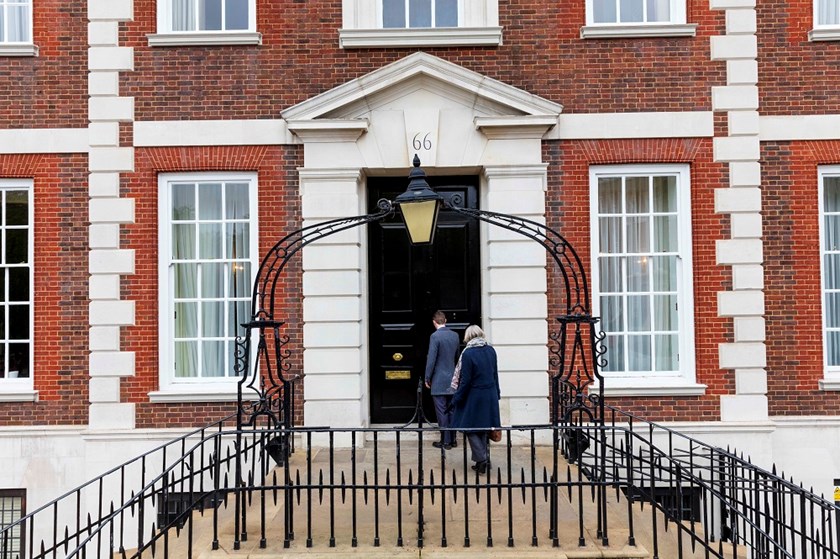Lawyers’ correspondence in family law
Insight

"Blessed is the man, who having nothing to say, abstains from giving wordy evidence of the fact".
There is a happy coincidence between George Eliot’s dictum on the one hand, and modern family law practice on the other.
The family proceedings rules ordain that no correspondence between the lawyers in a case can be filed in the bundle at court, unless specifically directed by the court. [PD 27A para 4.1].
So what is the point of lawyers’ correspondence in family law? What is its most efficient deployment? And how should it be done?
Those of us who practise family law are aware of the massive privilege and responsibility that we have. We represent clients who are at a crossroads in their lives, and subject to some of the most stressful moments that they will experience.
So how we communicate will have an equivalently weighty impact.
The first question for us as lawyers is "what are we actually trying to achieve".
Only write a letter or email if you actually need to.
Our correspondence as lawyers is indeed a mode of communication. There are many other modes of communication, which may be more apt than the written word.
It will often be more effective to make a telephone call. Or, often much better, to have a meeting.
Presentation
What you say in a letter, and how you say it, really matter. Think of how you want to portray your client, or her/his predicament. Then put it in writing – succinctly and as simply as possible.
Avoid long sentences and showing off with fancy language. You are representing a client, not submitting a university thesis.
Remember that your letter will be read by your client’s wife/husband. It will therefore be a seriously bad idea to ramp up the tension which will be latent or already apparent in a case. Do not wind up your client’s spouse/partner by your provocative correspondence.
Beginning a case by writing a needlessly aggressive and insensitive way can poison the rest of the case. And needlessly poison the relationship between a divorcing couple, who may have children. Don’t start off on the wrong foot. A stray aggressive letter could have a very long tail.
Of course there will be cases where a robust position needs to be urgently adopted, whether at the outset of a case or as the case develops. But don’t allow your correspondence to be the gratuitous trigger for a battle or a war.
Open letters
On the subject of setting a tone to the correspondence, the writer favours the sending of open offers early in a case, when appropriate. Often we will be confident of the final outcome, and therefore able to send an open offer before substantial costs have been incurred. That has the effect of concentrating minds. A costs order can of course be based on the unreasonable refusal of an open offer (for example, see Family Procedure Rules, r 28.3(7)(b)). This has very recently been emphasised by the President, who issued an amendment to para 4.4 of PD 28A which came into effect from 27 May 2019; refusing openly to negotiate reasonably and responsibly will generally lead to a finding of conduct in respect of which the court will consider making an order for costs. The amendment specifically states that this applies to ‘needs’ cases, where the applicant litigates unreasonably resulting in the costs incurred by each party becoming disproportionate to the award made by the court.
Emotion and a professional approach
Avoid emotion. Never write a letter in the heat of the moment. Let 24 hours elapse before you respond to a provocative or silly letter. Your letter will then be more measured and persuasive.
The Resolution guides to good practice and correspondence will be invaluable tools. Absorb them.
Client approval of correspondence
Often, perhaps most often, you will want your client to approve the correspondence that you address to the other lawyers. It’s normally easy to arrange for this, as your clients will tend to have email access, and the ready ability to approve/comment on it.
But we are skilled professionals, and it’s obviously within the remit of our instructions to send letters without first getting them approved by the client, if we have a clear idea of what we want to say and how to say it.
Technology and correspondence
Invariably our correspondence will be sent by email, rather than by snail mail alone.
Most of us will have IT tools which facilitate efficiency and eliminate mistakes, for example in the typing or mistyping of the client’s email address (see for example here).
Mode of written communication
Obviously modern technology supports corresponding by text or WhatsApp etc as well as email. This will be particularly appropriate for communication with clients. They may want a quick, snappy and efficient service, especially if that is going to save time and cost.
Confidentiality
Again, you will be thinking about encryption, bearing in mind recent publicity about WhatsApp, and about what type of confidentiality your client wants to have. You will have discussed all this in your first meeting/engagement letter.
Putting your important advice in writing
It is vital to put your important advice to a client in writing. This will prevent misunderstandings, especially in relation to technical points (for example whether a maintenance order can be extended).
Rationing correspondence
Never be bullied by the other lawyers into being compelled to answer points in letters which are irrelevant or even disproportionate, or into rushing your answers. You don’t dance to their tune. In big or long-running matters, it may be most cost-effective and efficient to assemble any relevant correspondence points into a weekly letter, rather than quick fire letters spread over a number of days.
It takes a brave person to disagree with Winston Churchill. He famously stated:
"... if you have an important point to make, don’t try to be subtle or clever. Use a piledriver. Hit the point once. Then come back and hit it again. Then hit it a third time – a tremendous whack".
On the contrary, we surely know better. Family law is an area where hectoring and rhetoric should always be avoided. In a sincere quest for calm and peaceful resolutions, you will never walk alone.
If you require further information about anything covered in this briefing, please contact Simon Bruce, or your usual contact at the firm on +44 (0)20 3375 7000.
This publication is a general summary of the law. It should not replace legal advice tailored to your specific circumstances.
© Farrer & Co LLP, August 2019
Please note this content was originally published in the Family Law Journal. August 2019 edition, best practice section.







